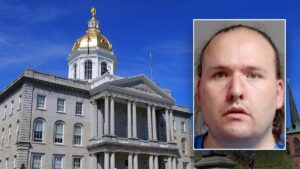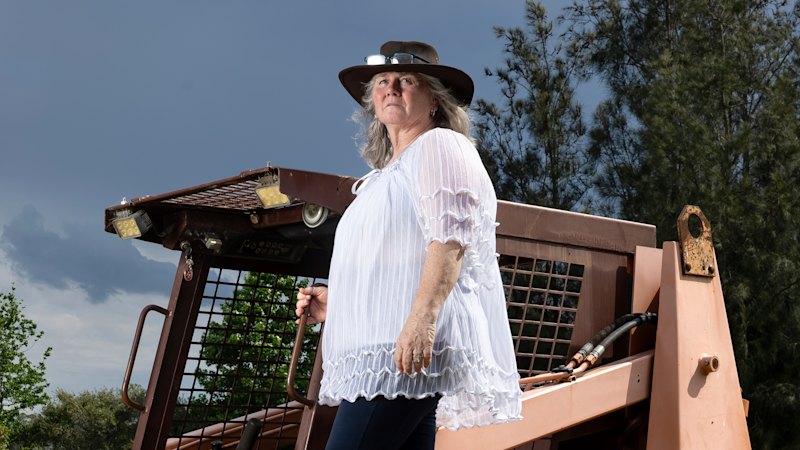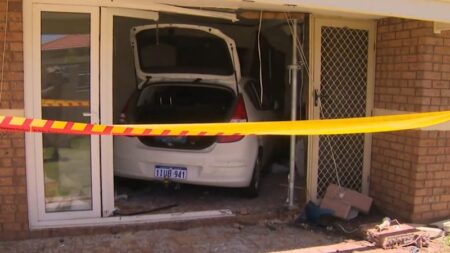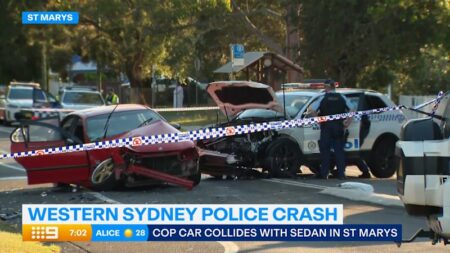“I don’t want anything big – just a small house that I could live in and that would enable us to keep the property and provide that sense of security as I get older.”
Janette Purdon, pictured at her property in Freemans Reach.Credit: Sitthixay Ditthavong
Philip Walton, who lives on rural acreage in Yarramundi on Sydney’s western fringes, faced similar barriers trying to obtain approval for a secondary dwelling on his property for his children.
He questioned why residents in urban areas can build granny flats on residential blocks as small as 450 square metres, but rural landowners living on more than 10 hectares in size cannot.
“We have four kids, and it’s on the cards that they’re going to be living at home until I can afford to help them into a property,” he said.
“All we’re asking for is the same rights as people have in the city but there doesn’t seem to be any flexibility in the planning process.”
Loading
Draft planning changes due to be considered as part of the inquiry include limiting secondary dwellings to no more than two homes on a single rural lot for the use of either permanent housing, rental accommodation or family accommodation.
If adopted, the laws would apply to more than 350,000 NSW properties.
Many councils on Sydney’s urban fringes have also raised concerns that an increase in development activity in outer metropolitan rural areas could cause conflicts with land uses that supply about 20 per cent of the city’s food needs.
Blue Mountains Council, in a submission to the inquiry, argued a blanket planning approach could trigger inappropriate development in land susceptible to bushfires or flooding, resulting in “poor development outcomes and significant environmental impacts”.
The Hills Shire Council – which has more than 27,600 hectares of rural zoned land, or 70 per cent of the local government area – has warned population growth in other parts of Sydney has meant the role of the rural areas to “provide fresh produce and building materials for Sydney and the wider region should not be undervalued”.
Loading
Planning changes to be considered by the inquiry include permitting secondary dwellings through a “complying development certificate” process which would negate the need for landholders to lodge detailed development applications to local councils.
Housing Institute of Australia executive director Brad Armitage estimated that streamlining planning approvals could cut $15,000 from the cost of development.
The peak body for councils, Local Government NSW, has cautioned against such an approach, instead calling for councils to “retain flexibility with the power to adopt provisions that reflect local circumstances”.
Hornsby Council acting general manager Glen Magus said rural areas had specific issues that needed to be considered as part of the development process, including on-site sewerage management requirements.
Despite those concerns, NSW Farmers Association president Xavier Martin said the planning changes could increase the viability for farming communities by permitting housing options that would facilitate multi-generational living and accommodation for seasonal workers.

NSW Farmers president Xavier Martin supports the proposed planning changes.Credit: Sydney Morning Herald
In a statement, Planning Minister Paul Scully said the NSW government supported the inquiry, adding that “secondary dwellings are an important component in the suite of responses necessary to address the housing challenge in rural NSW”.
Hawkesbury councillor Nathan Zamprogno has downplayed concerns over the impact on agricultural land, saying targeted controls would “balance” environmental factors in rural areas while providing housing options for landholders.
The inquiry is due to report back to NSW Parliament in February next year.
Start the day with a summary of the day’s most important and interesting stories, analysis and insights. Sign up for our Morning Edition newsletter.
Read the full article here














